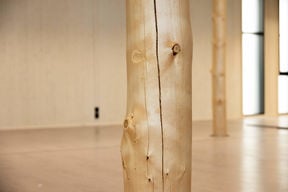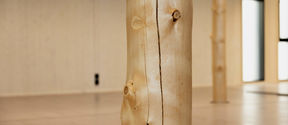Wooden buildings are a sustainable alternative in the face of global steel shortages

The war in Ukraine and the resulting European sanctions on Russia have dramatically affected energy and commodity prices. The combination of supply uncertainty, expensive energy, and rising material costs has added urgency to the already critical need to embrace sustainable, locally available alternatives such as wood. Building with wood instead of steel and concrete would help Europe not only address its immediate problems but also improve its prospects in the face of long-term challenges.
The price of steel jumped after Russia invaded Ukraine, and it has remained high as the war continues. Depending on the exact type, steel now costs 25-30% more than it did early this year. Supply problems and high prices are likely to persist because Russia and Ukraine are two of the world’s largest steel exporters. Industries that rely on steel urgently need an alternative, and sustainable materials such as wood can fill that gap.
The construction industry in Finland is already facing shortages and possible bankruptcies, but researchers in the forested Nordic nation have an alternative that could help Finland and Europe more broadly. ‘Wooden construction could offer a solution, and we could change the structure of the industry in a short time if we’re politically committed,’ says Seppo Junnila, a professor at Aalto University who studies sustainable real estate.
The technology and know-how to construct buildings under eight storeys out of wood is already available. According to Junnila, contractors have continued using steel and concrete mainly because of the business risks involved in switching to an unfamiliar technology. ‘What’s needed is an ecosystem where companies in the supply chain see the business benefit of switching from concrete and steel to wood. They know how to do it, but so far the costs have been relatively low and making the change has been too much of a business risk because there’s reliable demand for concrete apartment buildings,’ he explains. ‘If the price stays high, whether because of the war or other things, then there will almost automatically be a switch to constructing wooden residential high-rises.’
Seppo Junnila‘Wood is the only short-term solution, because new solutions with steel or cement would take 10 to 20 years to make it to market.’
‘We’re lucky in Finland because we made the decision to promote wooden construction about five years ago. New legislation was introduced that made wooden construction more competitive,’ says Junnila. The new law requires an assessment of greenhouse gas emission over the entire lifecycle of new buildings, and Junnila says wooden buildings will clearly be better than steel or concrete.
The Finnish government has also set of a goal of 45% of public construction using wood by 2025 – tripling the market share from 2019. While Finland began on this path years ago, the same solution is available to other countries in Europe. ‘Even at the European scale, it’s a feasible strategy, and it greatly increases a nation’s resilience,’ says Junnila. ‘It’s also the only short-term solution, because new solutions with steel or cement would take 10 to 20 years to make it to market.’ Wood can often be sourced locally or regionally, and it takes less energy to produce than steel or concrete, reducing the demand for fossil fuels. Shifting to wooden construction would help Europe in its effort to rely less on Russian energy and resources.
In addition to bringing down the demand for steel and fuel, wooden buildings would reduce carbon emissions and increase carbon storage. Ali Amiri, a postdoctoral researcher in Junnila’s group, says that ‘building with wood creates 20-30% less greenhouse gas emissions than steel and concrete buildings. On top of that, half of wood is carbon, so wooden buildings provide long-term carbon storage.’ According to the group’s research, using wood to build 80 percent of new residential buildings in Europe would sequester 55 million tons of carbon dioxide per year, equivalent to nearly half of the annual emissions of Europe’s cement industry.
‘We already know that we need a more sustainable, long-term solution, but tradition and history have prevented that – path dependency has locked us into existing technologies,’ says Junnila. ‘We need to make changes in construction, energy, and other areas, and now is the perfect time for it because there’s an extra external pressure to make the change.’
Can a city store as much carbon as a forest?
A new tool helps show how growing cities can remain carbon neutral
Investments in wood competence
Significant sum of donations of 700 000 euros enables high-quality wood science teaching with wider availability.
Wooden buildings are a sustainable alternative in the face of global steel shortages
Building with wood instead of steel and concrete would make construction more sustainable and supply chains more resilient
Bio-based coating for wood outperforms traditional synthetic options
Researchers turn a non-toxic residue into wood coating that resists abrasion-, stain-, and sunlight.Read more news

DeployAI Partners Gather for Heart Beat Meeting in Helsinki
The European DeployAI project's partners gathered for the Heart Beat meeting hosted by Aalto University Executive Education in Helsinki.
Aalto computer scientists in ICML 2024
Computer scientists in ICML 2024
In low-hierarchy organisations, even key policy issues are discussed in Slack
In a recent study, Aalto University alumn Lauri Pietinalho, a visiting scholar at New York University's Stern School of Business, and Frank Martela, an assistant professor at Aalto University, investigated how low-hierarchy organisations deal with shared policies in confrontational situations and how authority functions within them.